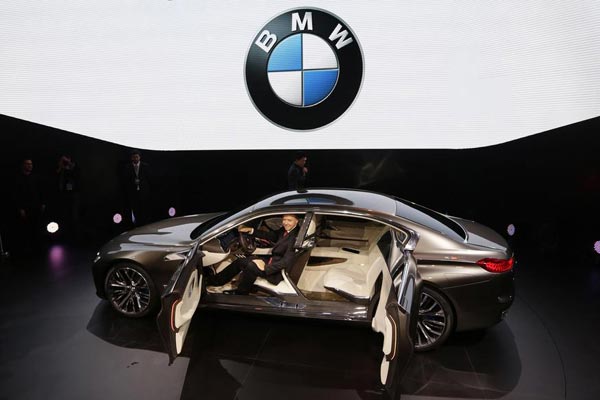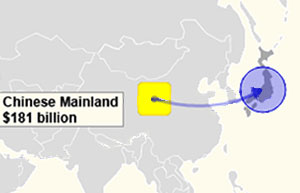BMW extends joint venture with Brilliance China to 2028
(Agencies) Updated: 2014-06-24 14:08
 |
|
A BMW Vision Future Luxury concept car is displayed during its world premiere ceremony at Auto China 2014 in Beijing April 20, 2014.[Photo/Agencies] |
BMW said on Monday it had extended its joint venture with Brilliance China Automotive Holdings until 2028, a move which analysts say would help both companies continue expanding in the world's largest car market.
BMW declined to comment about the details of the contract extension between the two companies, or say whether this entailed more ambitious expansion plans. Brilliance China Automotive Holdings also declined to comment.
The Munich-based auto maker has been working with Brilliance since 2003, and builds the X1 offroader as well as long-wheelbase versions of its 3-series and 5-series cars in plants run by BMW Brilliance Automotive in China.
|
 |
 |
Despite a gentle easing in national economic growth in 2013, China's auto sector grew 15.7 percent to 17.9 million passenger vehicles, according to the China Association of Automobile Manufacturers.
BMW is aiming for 2014 sales of 2 million or more, after it delivered a record 1.96 million cars in 2013. Of the 1.96 million BMW and Mini cars sold in 2013, 20 percent were sold in China.
The German firm is expanding its China operations because it wants to cut its dependency on the sluggish European market, which last year accounted for 44 percent of group sales.
In China, BMW Group sold 390,713 Mini and BMW branded cars in 2013, a 19.7 percent rise from the year earlier.
BMW has been broadening its footprint in China. Earlier in June it placed yuan-denominated asset-backed securities, a move which helps pay for expansion plans in local currency.
BMW's effort follows on from Daimler, which last year restructured its joint venture with BAIC Motor as a way to gain a tighter grip of its sales and distribution network in China.
European and US manufacturers are eager to increase their presence in China, but have been limited to owning 50 percent or less of joint venture companies run together with Chinese state-owned enterprises.
In addition to the ownership threshold, the current policy calls for foreign automakers to set up a jointly-run technical centre in China and to transfer certain technologies to their local partners.
- BMW's second upgraded X1 hits the road in China
- New BMW i8 plug-in hybrid sports car delivered
- BMW to deliver electric car in China in Sept
- xDrive BMWs hit the road in China
- BMW to announce its first Mexican car plant in July
- BMW Culture Journey fleet to embrace the fascinating color of Guizhou province
- PBOC takes more steps to liberalize interest rates
- Qoros 3 Hatch prices announced, taking orders
- Bright Food sees bright M&A options
- CAR embraces CTO of IBM Greater China
- 2014 Auto Shenyang Expo opens
- China to build more granaries
- Chengdu to hold electronics fair in July
- Kawasaki to build LNG tankers in China
















